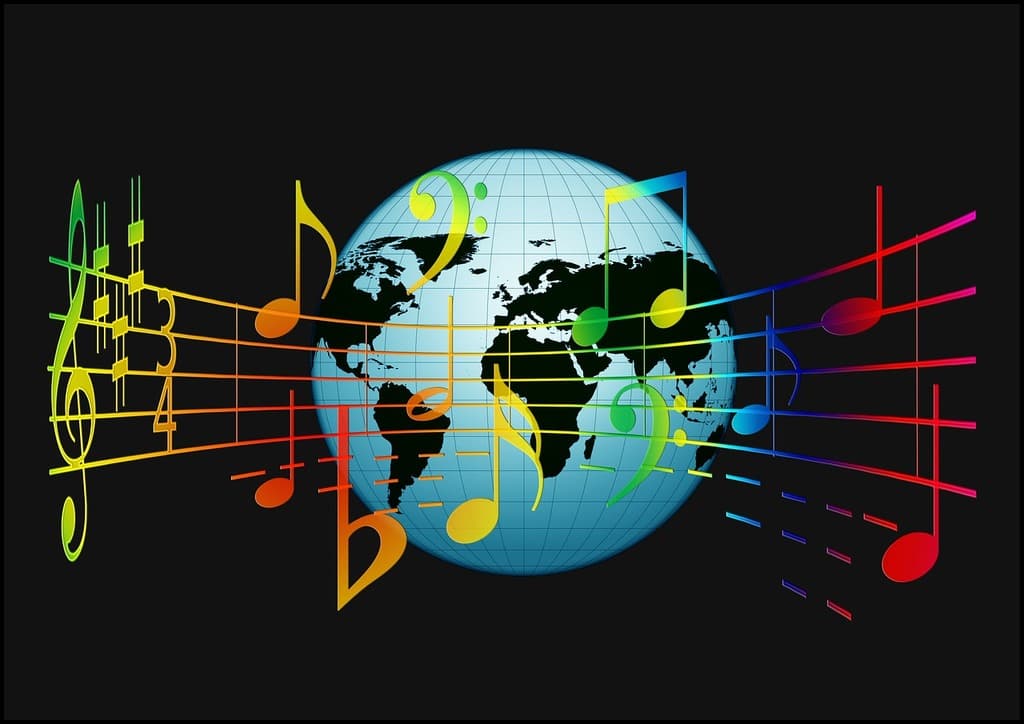The landscape of music is ever-evolving, with trends shifting rapidly as artists and listeners embrace new styles, technologies, and cultural influences. The latest trends in music showcase a fascinating blend of innovation and tradition, reflecting the dynamic nature of the art form.
Current Musical Trends Shaping the Industry
Today’s music industry is a melting pot of genres, sounds, and influences. One of the most significant trends is the rise of genre-blending, where artists combine elements from different musical styles to create unique, hybrid sounds. This trend is evident in the growing popularity of genres like “Latin trap” and “K-pop,” which seamlessly integrate diverse musical traditions.
Another prominent trend is the resurgence of retro influences. Many contemporary artists draw inspiration from the past, incorporating elements from genres like disco, funk, and ’80s synth-pop into their music. This nostalgic turn is not just about replicating old sounds but reimagining them in a modern context, creating a sense of familiarity and novelty.
The integration of technology in music production and consumption has also revolutionized the industry. The use of artificial intelligence in music composition and the rise of virtual reality concerts exemplify how technology is pushing the boundaries of what is possible in music.

Impact of Streaming Platforms
Streaming platforms have fundamentally changed how music is distributed and consumed. Services like Spotify, Apple Music, and Tidal have made it easier than ever for listeners to access a vast array of music from around the world. This accessibility has led to the democratization of music, allowing independent artists to reach global audiences without the backing of major record labels.
Streaming platforms have not only transformed music consumption but also influenced the way artists release their music. The emphasis is now on releasing singles and EPs rather than full albums, catering to the shorter attention spans of modern listeners. This shift has also led to a rise in playlist culture, where curated playlists become a primary way for people to discover new music.
The Rise of Social Media and Viral Trends
Social media platforms like TikTok, Instagram, and YouTube have become powerful tools for music promotion. Viral trends on these platforms can catapult a song to global fame almost overnight. Artists leverage these platforms to connect with fans, promote their work, and participate in viral challenges that boost their visibility.
TikTok, in particular, has emerged as a significant driver of music trends. The platform’s short-form video format encourages users to create and share content set to music, often leading to the virality of certain tracks. Many artists now tailor their music to fit this format, with catchy hooks and memorable beats that resonate with TikTok’s audience.
Embracing Diversity and Inclusion
The music industry is increasingly recognizing the importance of diversity and inclusion. Artists from diverse backgrounds are gaining prominence, bringing their unique perspectives and cultural influences to the mainstream. This trend is not only enriching the musical landscape but also fostering a more inclusive environment where different voices can be heard and celebrated.
Representation matters, and the growing visibility of artists from marginalized communities is breaking down barriers and challenging stereotypes. This shift is paving the way for a more equitable industry where talent is recognized regardless of background.
Focus on Mental Health and Well-being
In recent years, there has been a growing awareness of mental health issues within the music industry. Many artists are using their platforms to speak out about their struggles with mental health, reducing the stigma and encouraging open conversations. This trend reflects a broader societal shift towards prioritizing mental well-being and recognizing the pressures faced by artists in the public eye.
The emphasis on mental health is also influencing the themes and lyrics of contemporary music. Songs that address mental health challenges, self-care, and emotional resilience resonate deeply with listeners, fostering a sense of connection and solidarity.
Bullet List of Key Trends
Here are some key trends currently shaping the music industry:
- Genre-blending: artists are combining different musical styles to create unique sounds.
- Retro influences: modern music is incorporating elements from past decades.
- Technology integration: aI and VR are being used in music composition and live performances.
- Streaming platforms: these have transformed how music is consumed and distributed.
- Social media impact: platforms like TikTok are driving viral music trends.
- Diversity and inclusion: the industry is embracing artists from diverse backgrounds.
- Mental health awareness: artists are openly discussing mental health issues.
The Future of Music
Looking ahead, the music industry is poised for continued innovation and transformation. As technology advances, new possibilities for music creation and consumption will emerge. Virtual reality concerts and immersive experiences are likely to become more prevalent, offering fans new ways to engage with their favorite artists.
Sustainability is also becoming a focus within the industry. Artists and labels are increasingly aware of the environmental impact of tours and festivals, leading to initiatives aimed at reducing their carbon footprint.
The global nature of the music industry will continue to grow, with cross-cultural collaborations and influences becoming even more prominent. This trend will further diversify the musical landscape, making it richer and more inclusive.
In conclusion, the latest trends in music reflect a dynamic and ever-changing industry. From technological advancements to social movements, these trends are shaping the future of music in exciting and unpredictable ways.
